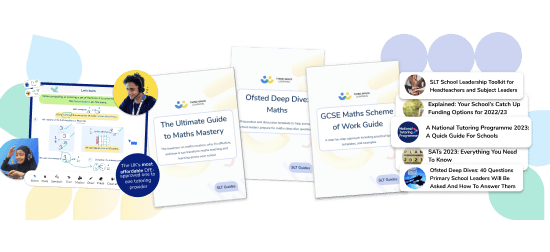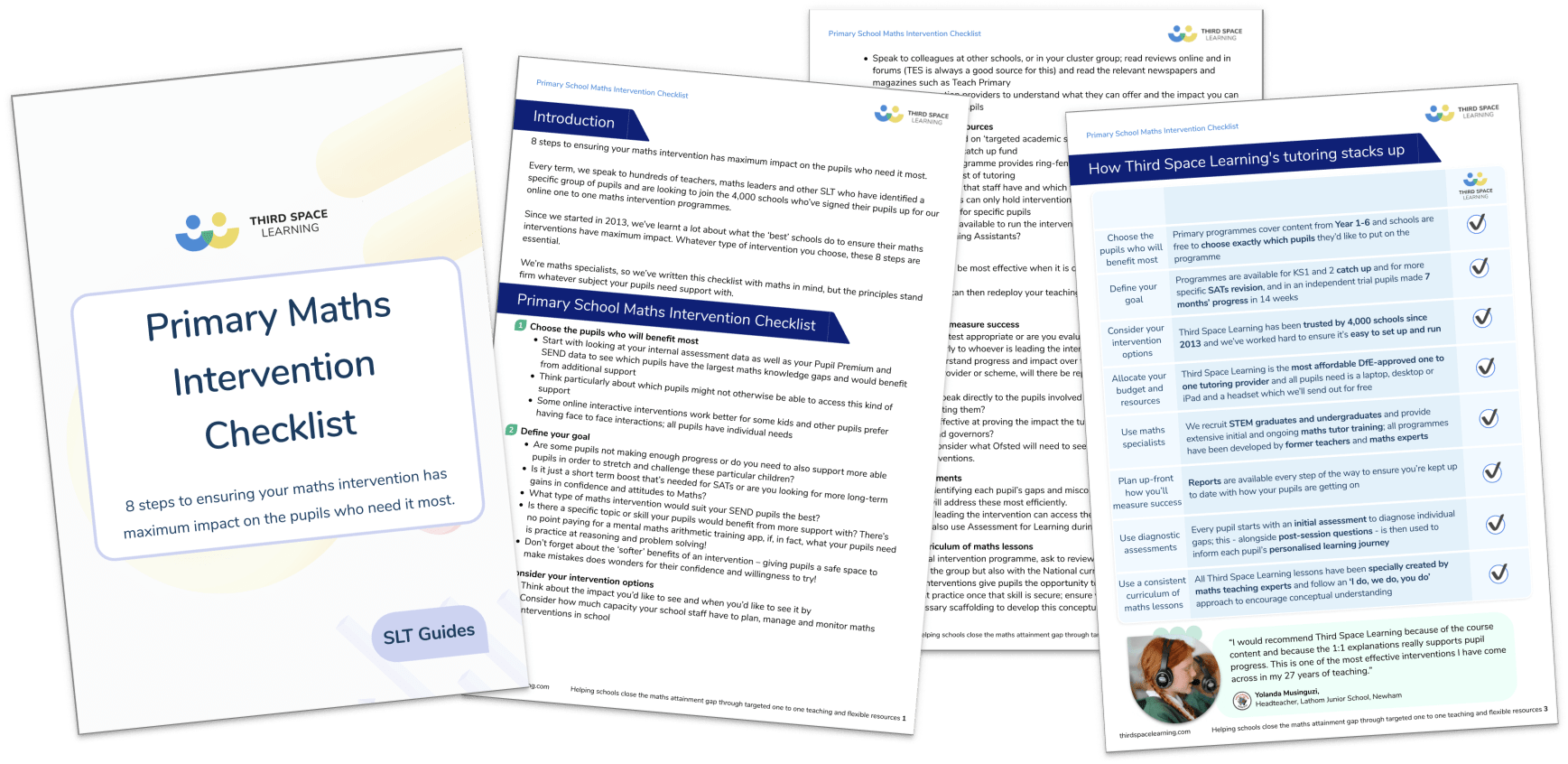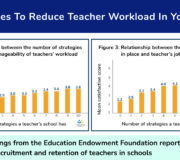Making Effective Use Of Teaching Assistants In The Classroom: What We Can Learn From The Research
All teachers and school leaders strive to make the most effective use of teaching assistants. After all they can be one of the most valuable assets in the classroom, or, in some situations, a cost that SLT will be looking to cut. Here John Dabell looks at the research surrounding effective use of teaching assistants and how we can ensure their effective deployment whichever classroom their in.
Teaching assistants in primary schools
Teachers, Teaching Assistants (TAs), and adult helpers all have a specific job to do in the classroom and each role requires careful planning. The effective use and management of classroom TAs, specifically, also requires a coordinated approach to that planning.
Many people would agree that teaching assistants are the unsung heroes of the teaching profession and an integral part of school life. There are over 380,000 TAs in our primary and secondary schools and they account for about 25% of the school workforce in the UK.
Without teaching assistants many children would find accessing learning a huge challenge. Despite this, the value of TAs in supporting children and their colleagues is well recognised as being disproportionate to the financial recognition given to them.
What do effective teaching assistants look like
There are many highly trained expert school Teaching Assistants who are well-managed, well-deployed and whose work makes real impact: but this is far from the picture everywhere. In many cases, as Ofsted have found, less successful schools do not have good performance management systems in place for TAs: many are poorly trained do not always understand their role. To ensure real, meaningful impact value, Teaching Assistants must be well deployed and effectively managed.
The Effective Deployment of Teaching Assistants project (or EDTA) argues that a fundamental about-turn is required by schools if we are going to get the best use of TAs. They suggest we need to consider three organisational and structural factors:
- Deployment of TAs
- Practice: TAs interactions with pupils
- Preparedness
Effective deployment of your teaching assistant
Not all TAs are deployed effectively and there are huge variations in how they are trained. Vibrant, coordinated partnerships help children make progress most effectively, but how many teachers have time to properly plan and co-create learning with their TAs and deploy adult help well? Often this lack of effective deployment leads to TA’s over-supporting the class, or “velcroing” to a particularly weak pupil.This can, in fact, be detrimental to pupils.
In ‘Deployment and Impact of Support Staff in Schools’ the Institute of Education found that ‘the more support pupils received from support staff, the less progress they made […] in Maths, science and English […] and that TAs were more focused on completing tasks than pupils’ learning and understanding’.
Planning for teaching assistant deployment
It is down to teachers and particularly the senior management team to make sure that teaching assistants are used effectively. If the majority of TAs spend their time in classrooms supporting lower-attaining pupils and those with SEN, then it may be time to take stock of your schools TA deployment – as these are precisely the pupils who need to benefit from maximum time with a teacher.
While the role of a TA should be a diverse one, TAs rarely work with middle attainers or high attainers. To combat this, the EDTA states that ‘in order to help these vulnerable learners, you may wish to consider ways of using TAs to free up the class teacher so he or she can spend more time working with struggling pupils.’
How to maximise impact with Teaching Assistant deployment
The 2015 Education Endowment Foundation (EEF) Guidance Report ‘Making Best Use of Teaching Assistants’ made 7 recommendations to maximise the impact of teaching assistants based on the best research evidence:
- TAs should not be used as an informal teaching resource for low-attaining pupils.
- Use TAs to add value to what teachers do, not replace them.
- Use TAs to help pupils develop independent learning skills and manage their own learning.
- Ensure TAs are fully prepared for their role in the classroom.
- Use TAs to deliver high-quality one-to-one and small group support using structured interventions.
- Adopt evidence-based interventions to support TAs in their small group and one-to-one instruction.
- Ensure explicit connections are made between learning from everyday classroom teaching and structured interventions.
The evidence in the report is crystal clear: poor TA deployment has a negative impact on attainment; effective TA deployment can have positive impacts.
Practising teacher assistant interaction with pupils
The quality of the interactions TAs have with pupils is absolutely key to learning gains. They spend a lot of time with pupils and – in the same way as teachers – their Maths specialist knowledge, their language, and their behaviour are highly important.
Unfortunately, just as there is a dearth of teachers who are not Maths subject specialists, the reality is there will be even fewer TAs with Maths expertise. In Maths, particularly Maths intervention, this is a big issue as very often the children who need the most specialist help are assigned to a TA for support. This begs the question:
How effective is your maths intervention when led by a teaching assistant?
The physical resources may already be there, but the expertise isn’t. Schools likely have TAs, but are considerably less likely to have Maths specialist TAs. With the average school spend on TAs being around £200,000 per year, is Maths provision getting a fair deal?
If you want to get the best out of your pupils in Maths then schools need specialist help. To this end, it can be hugely beneficial to conduct an intervention ‘health check’ and ask whether the intervention programs you use are effective?
Third Space Learning’s 1-to-1 interventions are forged in the belief in trained specialists providing Maths support specifically to avoid the issue of a Maths intervention being taught be someone who perhaps isn’t already fluent in subject matter.
Primary School Maths Intervention Checklist
Stop wasting money on interventions that don't work with these 10 simple steps
Download Free Now!Teaching assistant standards
Without a common framework and set of teaching assistant standards, the use of TAs will likely to continue to vary widely, as will their effectiveness and the quality of their student interactions.
Although the Department for Education has not seen the creation of a professional set of teaching assistant standards as a priority, they have however, allowed UNISON, NAHT, NUT, and Maximising the Impact of Teaching Assistants (MITA) to publish a set of Professional Standards for TAs.
The resource is enormously helpful, but the government was not involved in its creation.
Teaching assistant impact through ‘preparedness’
School leaders can adopt a number of strategies to utilise their staff for maximum impact and the EEF guidance report outlines some of the more recognised and effective approaches for ‘preparedness’:
Teaching assistants and subject knowledge
It is essential that teaching assistants have an up-to-date knowledge of the recent changes to the mathematics curriculum and not just the content changes but the change in emphasis: i.e. problem solving and mathematical reasoning.
Ways in which you can help TAs be subject knowledge prepared include:
- Sharing subject knowledge, understanding, and expertise.
- Sharing Maths tips and techniques.
- Sharing different teaching and learning approaches.
- Suggesting ways of motivating children.
- Helping them learn how to use questions effectively to strengthen mathematical thinking.
- Suggesting ways of promoting children’s independence, team-work, and self-assessment.
- Developing reasoning and problem-solving skills.
- Helping identify and resolve misconceptions.
- Sharing how to assess mathematical understanding.
Third Space Learning Maths Hub resources to support Teaching Assistants
- Maths specific CPD – Maths in Minutes
- SATs Revision lessons designed to be led by non-expert TAs
- Step by step breakdown of how to answer past SATs reasoning questions: SATs in Minutes
Dos and don’ts for teaching assistants
In many ways this is a wishlist from a teacher perspective, but it’s born from experience with the best teaching assistants
- Develop a passion or specialism in a subject. Be the one that the SLT in school know can run a maths or English intervention. This will make you invaluable and make your role more interesting and enjoyable.
- Keep learning. Take up any CPD offered, and push for it at your feedback sessions if it’s not. You are not just an extra pair of hands. Your own career needs to be developed
- Be prepared and proactive. Make sure you have those chats with your teacher so you know what’s coming next and what the topic of the day is. Be alert to who might need help at different points.
- Stay calm and patient. When a lesson looks like it might not be going quite as well as planned – and you’ll be the first to recognise this – keep those you can on track, and be a beacon of calmness amidst any chaos.
- Ask for help. Don’t make it up. If you don’t know the answer to a question from a child, there’s no shame in both asking the teacher; just make sure you do it at an appropriate break.
- Learn the children’s names as early as you can. Relationships are everything when you’re a teaching assistant – children look to you, trust you and confide in you so they deserve your respect in return.
- Keep smiling. It’ll get you through a lot!
Reviewing your current teaching assistant practice
Reviewing your current practice and assessing whether changes should be made to ensure the effective use of TAs is paramount and should be a key element of your school improvement plan. This will give you the opportunity to assess the way that TAs are trained for their roles and whether they are deployed in ways that allow them to work most effectively.
To set in motion change then you could plan an inset session around your provision and commit to the following five steps:
- Conduct an audit
- Define purpose of TA role
- Develop whole school policy
- Provide training and preparation
- Review and change
This process is described comprehensively in MITA’s ‘Guidance for school leaders and teachers‘.
Managing human resources means managing teaching assistants
For most teachers, managing resources is part and parcel of the daily routine, but how much thought do we give to the TA as a valuable human resource? There are four areas to think about:
1. A transparent understanding of the role and responsibilities of the TA
The role of a TA has to be clear and unambiguous and the following areas need to be considered; which children will the TA work with during Maths lessons, what will the TA do during whole-class interactions, who has responsibility for checking children’s work, and who will prepare the resources.
2. Communication
Without effective communication before a lesson then a TA will have little direction during it. All TAs, no matter how experienced, need to be briefed about the learning objectives and the tasks ahead in a way that isn’t a last minute conversation. Giving TAs access to planning in advance should be encouraged as TAs observations are crucial in evaluating children’s learning and time. As such it should be planned into the day for feedback and for a TA to provide ideas, suggestions, and ask questions.
3. Space
Appropriate working arrangements are an important factor and you will need to review where TAs are expected to work. Too often TAs are expected to work in a cramped or inappropriate working space with a small group or individuals and this is not conducive to effective learning. Where possible children should be working within the classroom alongside their peers so that teacher interaction is maintained.
4. Training
As a school senior leaders need to discuss where TAs require further training. These areas could include more than Maths (e.g. reasoning, fluency, mastery), such as classroom management and observation. Maths coordinators should give TAs the opportunity to share their training needs and according in-house training should be set up to accommodate them.
Ofsted and teaching assistants
Finally, if according to Ofsted some of the 380,000 TAs in our primary and secondary schools are not being utilised properly, we as teachers must remember that genuinely outstanding teaching comes from collaboration – we know that no teacher is great alone.
Find out how the new Ofsted framework is being enacted during an Ofsted Deep Dive including reviews of the use of teaching assistants.
Are the teaching assistants in your classroom outstanding?
If all adults have a specific job to do in the classroom, it is imperative we don’t forget one of the most important roles of them all – outstanding teaching assistants.
If this post has led you to consider how TAs in your school are being deployed, and whether they can be used more effectively, here are some questions to think about that can be used to inform your thinking:
- How can our TAs add value to what teachers are doing?
- Do our teachers give clear direction and autonomy so they add value to the classroom?
- How can we upskill our TAs without spending money?
- Is our current TA workforce deployed strategically?
- Do we ensure that pupils with SEN are not routinely and unnecessarily separated from the teacher and classroom?
- Can we use strategies that do not require adult support such as peer-led group work?
- Does our training for TAs need to be refreshed?
- Do we have designated time for teacher and TA liaison?
- Are termly progress targets for numeracy set by teachers aligned to the targets pupils are working towards in interventions?
- Do TAs know what to listen out for in a Maths lesson so they can direct their support with more confidence?
- Do Maths interventions have to take place outside of the classroom?
Enjoyed this? Read more
DO YOU HAVE STUDENTS WHO NEED MORE SUPPORT IN MATHS?
Every week Third Space Learning’s maths specialist tutors support thousands of students across hundreds of schools with weekly one to one tuition designed to plug gaps and boost progress.
Since 2013 these personalised one to one lessons have helped over 150,000 primary and secondary students become more confident, able mathematicians.
Learn about our experience with schools or request a personalised quote for your school to speak to us about your school’s needs and how we can help.





